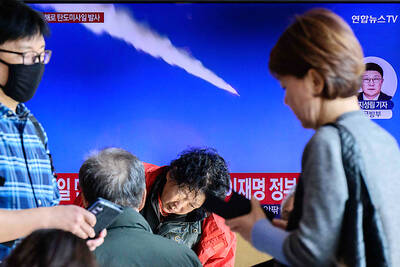China's new railway to Tibet has the potential to significantly alter the nation's trading and military relationships with South Asia, analysts say.
China promotes the line connecting the Tibetan capital of Lhasa with the rest of China, which opened on Saturday, as a key to developing the isolated Himalayan region known as the "roof of the world."
The government has already announced plans to extend the line from Lhasa to the edge of South Asia, with tracks to be laid all the way to the strategically important town of Yadong near the Indian border over the next decade.
Yadong, also known as Chomo in Tibet and Yatung in India, is 31km southwest of Lhasa, 100km from the Bhutanese capital Thimphu and 450km from the Bangladeshi capital Dhaka.
Observers say China's ability to access South Asia's markets will grow dramatically once the rail network has been expanded to Yadong, and even just the service from Lhasa would be of benefit.
"As China is one of the world's emerging economic powers, the new transportation service means that they will have an opportunity to dominate the South Asian market in the future," said Rajeshwor Acharya, an economist and former Nepalese ambassador to China.
"The flow of cheap Chinese goods will increase, which will have a negative impact on local industry in the South Asian countries."
In a sign of things to come, China and India will reopen on Thursday the Nathu La Himalayan pass, part of the famed Silk Road trading route, which had been closed since the two nations fought a brief border war in 1962.
The pass is just 30km from Yadong and has already been described by both countries as an important new avenue for bilateral trade.
However, not all in South Asia are fearful of China's expanding access to the region, with some in Nepal saying the kingdom will be able to reduce its trade dependence on India.
"It's a rosy prospect for Nepal to increase business with China," said Bijaya Ghimire, president of the business journalists' association in Nepal.
"So far Nepalese goods have only been able to reach the peripheral market of Tibet but with the operation of the railway, the products could penetrate the mainland China market," Ghimire said.
"At present 65 percent of Nepal's total international business including imports and exports is with India, whereas with China, it is less than 5 percent," Ghimire said
Some other analysts said the railway to Lhasa could be more of a concern for India on the military front rather than the economic one.
"It will significantly augment China's offensive military capability against India," said Brahma Chellany of the New Delhi-based Center for Policy Research.
"At short notice, China will be able to intensify military pressure on India by rapidly mobilizing up to 12 divisions," Chellany said.
"The new railway facilitates the easy transport of intermediate-range missiles and would allow China to rail-base in Tibet some of its intercontinental ballistic missiles," Chellany said.
"China indeed has designed its latest ICBM, the DF-31A, as a rail-mobile weapon," Chellany said.
Rahul Bedi, correspondent for Jane's Defence Weekly, said China was surrounding India by nurturing relations with Pakistan in the west, Bangladesh and Myanmar in the east and Sri Lanka in the south.
"If you join all the dots and look at Chinese activities in the region, it is effectively the Chinese encircling India -- using the ring of pearls strategy in the Indian Ocean region and a policy of encirclement in the mountainous area of Tibet," Bedi said.
However China stresses its peaceful intentions and its relations with India have improved in recent years, as evidenced by this week's reopening of the Nathu La pass.

‘CHILD PORNOGRAPHY’: The doll on Shein’s Web site measure about 80cm in height, and it was holding a teddy bear in a photo published by a daily newspaper France’s anti-fraud unit on Saturday said it had reported Asian e-commerce giant Shein (希音) for selling what it described as “sex dolls with a childlike appearance.” The French Directorate General for Competition, Consumer Affairs and Fraud Control (DGCCRF) said in a statement that the “description and categorization” of the items on Shein’s Web site “make it difficult to doubt the child pornography nature of the content.” Shortly after the statement, Shein announced that the dolls in question had been withdrawn from its platform and that it had launched an internal inquiry. On its Web site, Le Parisien daily published a

China’s Shenzhou-20 crewed spacecraft has delayed its return mission to Earth after the vessel was possibly hit by tiny bits of space debris, the country’s human spaceflight agency said yesterday, an unusual situation that could disrupt the operation of the country’s space station Tiangong. An impact analysis and risk assessment are underway, the China Manned Space Agency (CMSA) said in a statement, without providing a new schedule for the return mission, which was originally set to land in northern China yesterday. The delay highlights the danger to space travel posed by increasing amounts of debris, such as discarded launch vehicles or vessel

RUBBER STAMP? The latest legislative session was the most productive in the number of bills passed, but critics attributed it to a lack of dissenting voices On their last day at work, Hong Kong’s lawmakers — the first batch chosen under Beijing’s mantra of “patriots administering Hong Kong” — posed for group pictures, celebrating a job well done after four years of opposition-free politics. However, despite their smiles, about one-third of the Legislative Council will not seek another term in next month’s election, with the self-described non-establishment figure Tik Chi-yuen (狄志遠) being among those bowing out. “It used to be that [the legislature] had the benefit of free expression... Now it is more uniform. There are multiple voices, but they are not diverse enough,” Tik said, comparing it

North Korea yesterday fired a ballistic missile, Seoul’s military said, about a week after US President Donald Trump approved South Korea’s plan to build a nuclear-powered submarine. Analysts have said Seoul’s plan to construct one of the nuclear-driven vessels would likely draw an aggressive response from Pyongyang. South Korea’s Joint Chiefs of Staff said North Korea fired an unidentified ballistic missile toward the East Sea, referring to the body of water also known as the Sea of Japan. The missile landed in the sea outside Japan’s economic waters and no damage or injuries had been reported, Japanese Prime Minister Sanae Takaichi said. The missile